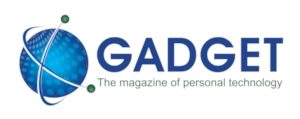Featured
Sex and biz bots boost financial and health education
Technology has a remarkable potential to do good and solve real-world problems – and innovations in areas like AI are proving it. Let’s Talk About Sex and Open Kasi, for instance, are two of the latest solutions designed to help make a positive change in financial services and health in South Africa.
Let’s Talk About Sex (LTAS) is an AI-powered chatbot aimed at providing critical sex education and support to South Africa’s youth around issues such as HIV, sexually transmitted diseases (STDs), unplanned pregnancies and abortions, as well as around broader concerns such as low self-esteem and depression. It uses machine learning to answer any questions users may have, and carries out a sentiment analysis on all questions to help develop relevant and empathetic answers.
Open Kasi is geared towards helping small business owners in townships streamline their financial functions and documentation such as invoices so that they have a real-time, any-time view of how their business is performing. It provides vital insights that allows these entrepreneurs to start, run and manage their businesses even without an in-depth understanding of fintech or financial aspects such as invoicing.
The teams conceptualised and developed the prototypes of these life-changing solutions at Microsoft’s AI for the Financial Services Industry (FSI) and Health hackathon in June. The event brought together talent from varying disciplines to collaborate on creating unique solutions for real problems, particularly affecting the financial services and health industries, using AI and machine learning services in the Azure Cloud.
LTAS and Open Kasi emerged as the winners from the six teams chosen to participate. “There was significant interest in the topics – we had to narrow it down to six teams from 39 proposals – because these sectors are always top of mind and there is a massive potential for impact by providing solutions to real-life issues,” says Asif Valley, National Technology Officer at Microsoft South Africa.
Building for future needs through diversity and inclusion
As part of creating tangible impact, these solutions broadly focused on building diversity and inclusion into them – and the diversity of the teams involved in the hack ensured that the solutions have the ability to cater to the needs of South Africans across the spectrum inherently built into them. This speaks directly to the hackathon’s aim of innovating and creating for good.
Another key aim of the hackathon was giving teams the freedom to explore their own ideas of what solutions these industries needed most. Each team got to define their own interpretation of meaningful change and create a unique solution to drive that change. “We wanted to get fresh perspectives that might leapfrog traditional issues and provide solutions that we might not even have thought of that build for future needs,” says Valley.
There were, however, guidelines that teams needed to work within. Teams could, for example, use any operating system, development language, framework, tools and hardware – and while solutions can stretch across multiple cloud platforms, all machine learning or cognitive technology aspects of the solution must have used Microsoft Azure Machine Learning or Microsoft Azure Cognitive Services.
Although the Open Kasi and LTAS solutions are still just prototypes, they are now one step closer to becoming a reality. The teams will receive mentorship, guidance and training through Microsoft’s Head Start programme. Head Start provides access to digital courses and training, live events, meetings and mentorship, which help take the prototypes to the next level and make them more commercially viable.
“Ultimately, we’d like to see these solutions in action so we can see the concept of using AI for good in action,” says Valley. “The AI for FSI and Health hackathon truly showed the potential of AI to solve real-world problems, so we are looking to grow it to include other sectors such as agriculture as well as get key stakeholders involved so we can focus on collectively developing the principles and boundaries that govern the ethics of AI.”
Share
- Click to share on Twitter (Opens in new window)
- Click to share on Facebook (Opens in new window)
- Click to share on LinkedIn (Opens in new window)
- Click to email a link to a friend (Opens in new window)
- Click to share on Reddit (Opens in new window)
- Click to share on WhatsApp (Opens in new window)
- Click to share on Pinterest (Opens in new window)
| Thank you for Signing Up |
















